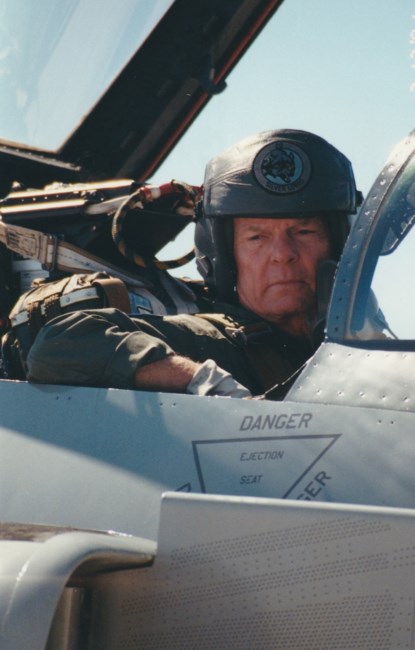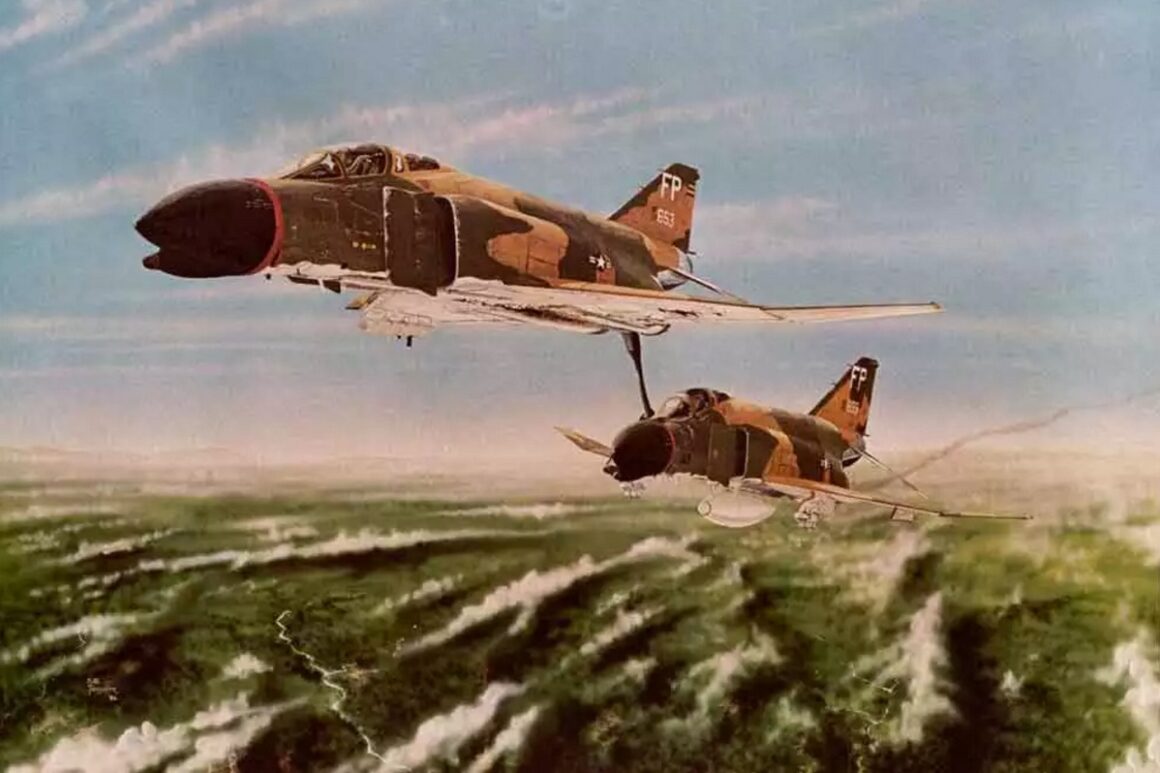Throughout military aviation history, there are stories of men and women rising to the occasion to display heroism that resonates for generations. Few stories are as spectacular as “Pardo’s Push,” named after Captain John Robert “Bob” Pardo’s heroic actions during the Vietnam War. It is a testament to his ingenuity and just one distinguished event in his career of service.
A Career Of Service

Bob Pardo was born and raised in Texas. He graduated from Hearne High School in 1952 and enlisted in the Air Force two years later. He was commissioned as a 2nd Lieutenant and awarded his wings in 1955 at Bryan Air Force Base, Texas. During his 20-year career, Pardo served in Vietnam with distinction, earning the Purple Heart and the Distinguished Flying Cross. He was later awarded the Silver Star for his extraordinary act of heroism.
The Extraordinary Airmanship of Pardo’s Push

On March 10, 1967, during the Vietnam War, Captain Pardo did something extraordinary. We captured his full story in an article in Avgeekery years back. Pardo and his wingman, Captain Earl Aman, were on a bombing mission over North Vietnam when both aircraft took enemy fire. Aman’s aircraft was hit by enemy fire and began leaking significant fuel. Without enough fuel to make it back to a safety, Aman would likely have to bail out over enemy territory.
In a split second decision, Pardo decided to do something brave that saved the life of his wingmen. First he tried nuzzling his aircraft up to Aman’s dragchute compartment but the downwash and buffeting killed that idea.
Pardo’s Push Made Possible By A Sturdy Tailhook and Steely Pilot
Fortunately though, the Phantom was also designed to serve in the US Navy where a carrier’s 1000-foot, floating runway was far too short for the prolonged niceties of a fluffy dragchute. As a result, all F4 Phantoms, both Navy and Air Force, sported very sturdy tail hooks to snatch the aircraft to a stop in feet, not miles.
So Pardo backed off. Aman dropped his hook shutting down his engines. Then Pardo closed in to push, using his cockpit canopy to nudge Aman’s lowered tailhook.
And this worked – sort of.
Pardo had already shut down one of his engines due to the fire so he could only slow, not arrest, the rate of descent for both aircraft making it a race against time between the border or the ground. And on top of this, every 30 seconds or so, Aman’s tailhook would slide off Pardo’s polished plexiglass.
Despite all that, after 88 miles of precise pushing, both safely aircraft limped into friendly airspace, but at an altitude of only 6000 feet which meant, at their rate of descent, just 2 more minutes in the air. Pardo was running low on fuel himself, so all four airmen ejected to safety.
Incredibly, Pardo was scolded for not saving his Phantom. Over twenty years later, Pardo finally received the recognition he deserved. Pardo and Aman eventually received the Silver Star for their heroism. (See below for Maj. Pardo’s citation.)
This act of heroism became known as “Pardo’s Push.”
Legacy and Retirement
After retiring from the Air Force in 1974 as a Lieutenant Colonel, Pardo continued his aviation career in the corporate sector, including a role as Chief Pilot for the Adolph Coors Companies. He eventually retired from private aviation in 2002.
Pardo’s legacy extended beyond his military service. He frequently engaged as a guest speaker at Air Force events and was actively involved with the River Rats, a Vietnam combat pilots’ association. In recognition of his heroism, Pardo was honored at The River Rats Museum at Aviation Heritage Park in Bowling Green, Kentucky, during its grand opening weekend in October 2023.
In Memory
Bob Pardo’s story, especially the episode of Pardo’s Push, remains an inspiring chapter in military aviation history. It not only showcases the extraordinary capabilities of pilots in combat but also underscores the profound bonds of trust and camaraderie that exist among those who serve. Pardo’s Push will forever be remembered as a remarkable act of aerial heroism and a poignant reminder of the unwavering spirit of those who take to the skies in defense of their country. The hero flew west on 5 December 2023. He is survived by his wife Kathryn, 5 children and 10 grandchildren. His heroism will live on in a story and aviation career that made him a legend.

